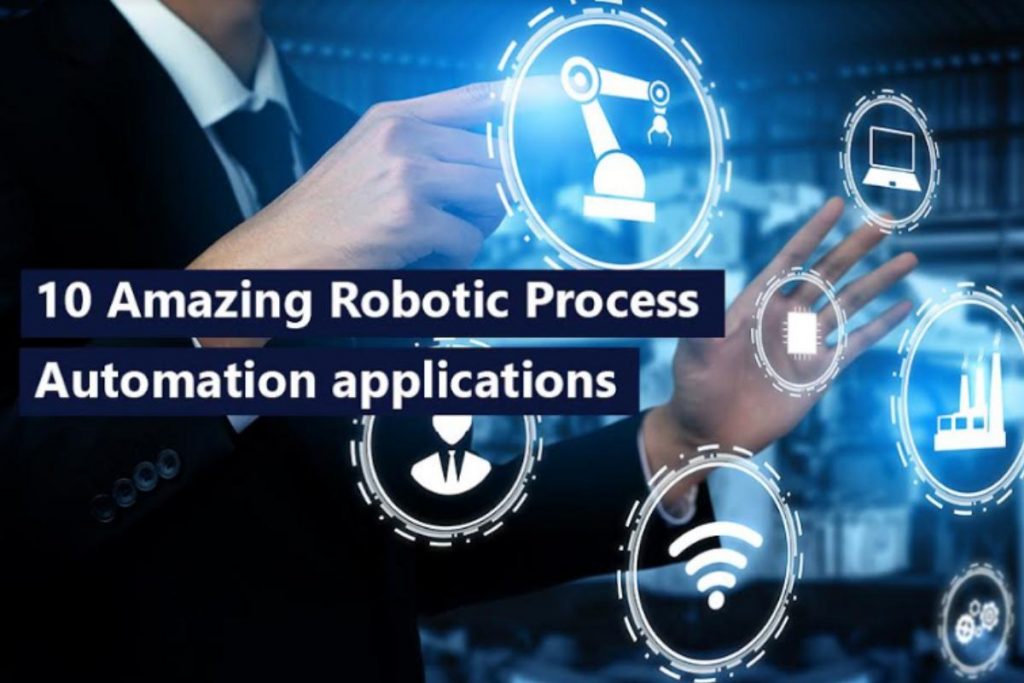Table of Contents
Introduction
Robotic Process Automation (often abbreviated as RPA) is an ever-evolving technology offering various solutions. These solutions can be applied in many contexts, yet the full potential of RPA is still to be harnessed. This yields consistent, productive & reliable results by automating repetitive tasks. Let us then delve into the wonders of RPA and how this automation technology (Robotic process automation technology) can revolutionize the way we work!
What is robotic process automation RPA & how does it work?
Firstly, RPA is an automation & AI-based digital protocol designed to manage digital systems & software by mimicking human activity. These augments manage activities for the betterment of businesses in terms of both accuracy & efficiency. Furthermore, by applying logic-based algorithmic statements, Robotic process automation software can power up an entire brand’s data handling.
Robotic process automation tools
1) Quote-to-Cash
An essential business process that boosts revenue for organizations that rely on selling. Operational sales issues can create customer dissatisfaction and predispose the risk of underestimated pricing due to clerical errors. System automation eradicates this and expedites the entire process.
2) Procure-to-Pay
This entails invoice extraction and payment data from many networks, including banks, logistics brands & vendors (to name but a few). Such networks often lack ergonomic integration methods. They usually utilize manual labor for such tasks. RPA bots substitute suchlike optimally fulfilling integration gaps with a completely automated system.
3) Customer Onboarding
Many B2C (Business-to-Consumer) organizations deploy a customer onboarding process. They uphold & honor customer relations to entice an uptake of their products. Such tasks can be undertaken by applying cognitive automation and OCR (Optical Character Reader) recognition. Even brands using legacy systems can enhance customer experience.
4) Employee Onboarding
Establishing and onboarding new employees have become a laborious and protracted process for HR and IT analysts. This spans tasks involving creating new work (email) accounts, access rights, plus more. However, the protocols involved and the repetitive manner of such activities enable automatability to apply preset workflows for new user account credentials. In addition, RPA bots are deployed to push notifications and send documents via email to new joiners. RPA has made it simpler for HR departments to streamline their processes. With modern HR software dedicated to assisting with employee onboarding and many other tasks, a company saves time and money while focusing on more important duties.
5) Data Migration and Data Entry
Many brands are still dependent on legacy systems for critical functions. For example, legacy billing systems need to collaborate with other systems that lack data acquisition capability from APIs. Conventionally, employees manually process this to transfer with formats such as CSV. RPA implementation minimizes such manual labor and unwelcome clerical errors. Organizations can even automate data entry workflows, maximizing productivity and curbing the time spent performing such activities. This is another example of robotic process automation services.
6) Data Validation
RPA is the aptest data validation tool for tasks, including verifying source data’s accuracy and quality before application, importing, or processing. Essentially, create consistent & comprehensive data, safeguarding against loss & corruption. This is another form of robotic process automation technology.
7) Extracting Data from various formats, including PDFs, Scanned Documents, etc.
Screen Scraping, OCR, and elementary pattern recognition enable easy data extraction from various formats, lowering manual data entry requirements.
8) Periodic Report Preparation
All employees prepare regular reports, informing their respective managers regarding what type of work and its volume plus progress made. However, curating such reports and sharing them with managers can become distracting. RPA solutions can auto-generate reports, analyze contents, and distribute this to pertinent stakeholders.
9) Producing Mass Emails
RPA can be an excellent option to automate the process.
10) Creating and Developing Invoices
As automation expedites manual processes, customers receive information earlier, including payments and enriched cash flow. Invoice generation processes and then shared with them are also automatable. Even for price comparison purposes, RPA implementation can monitor fluctuating prices. Software bots formulate price summaries and extract data for optimal pricing.
AssistEdge by Edge Verve – a prime example of RPA
AssistEdge is a connected automation platform empowering enterprises to unify data, people & processes. This unlocks new horizons for transformation. Its end-to-end capabilities span automation blueprinting & studio, process discovery & orchestration, plus RoI (Return on Investment) calculation. This propels enterprise-wide automation, infusing insights and intelligence for each stage. Fast & flexible workflows also ensure optimal delivery.
Other features include:
Smart Process Discovery
Deeper commercial process insights, analyze workflows and formulate informed decisions to expedite automation.
Automation Blueprint & ROI
Empowers enterprises to monitor operational metrics, process performance & automation ROI
Automation Prioritization: Auto-Automation
Assists in processing documentation, prioritization, and seamless exporting to the automation studio
Interactive Process Visualization
Process Orchestrator unifies end-to-end processes with bots, human contribution &AI (Artificial Intelligence) engines.
Enterprise-grade Security: Complex Document Processing
Unveil unstructured data from complex documents with deep learning algorithms
Single-click Export for Automation: Low Code / No Code designer
Offers novice developer ergonomic tools with contextual guidance, democratizing automation
Enterprise-grade Security: Employee Personal Assistance
Enables employees to automate their tasks with contextual assistance – independently!
Enterprise-grade Security: API-first Architecture
Seamlessly integrates with enterprise digital landscape, lowering hardware footprint.
Conclusion
RPA is a promising step into an innovative future based on data intelligence, autonomous workflows, and the beauty of AI & automation. It enables businesses to automate manual clerical tasks for greater productivity. Furthermore, robots are more efficient, specifically within complex or dangerous scenarios. These are just some of the numerous benefits of robotic process automation.

